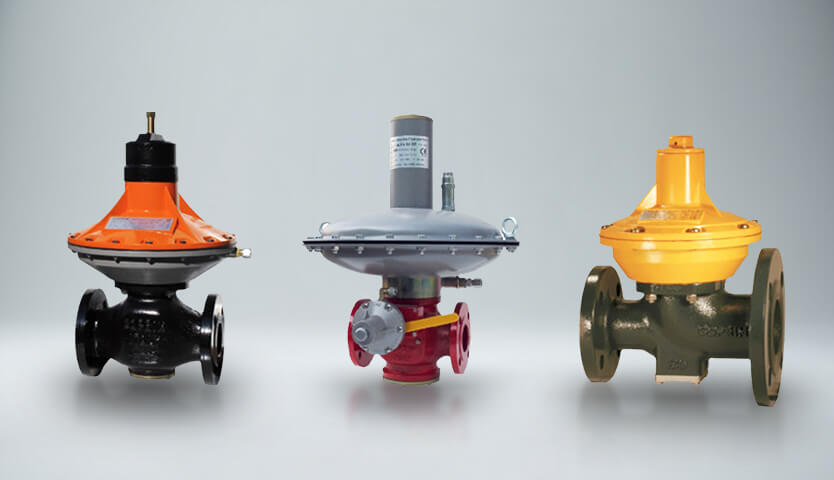Are All LPG Gas Regulators the Same?

In industries that rely on liquefied petroleum gas (LPG) — whether for heating, manufacturing, or energy generation — one small but essential component often makes the difference between a safe, efficient operation and a dangerous one: the LPG gas regulator.
While these devices may appear similar on the surface, not all gas regulators are the same. The differences lie in design, performance, pressure capacity, application, and compliance standards.
In this article, we’ll break down what LPG gas regulators do, how they differ, and what to consider when choosing one — especially for industrial and commercial applications where safety and precision are paramount.
What Is an LPG Gas Regulator?
An LPG gas regulator is a device that controls and stabilizes the pressure of LPG as it exits a gas cylinder or enters an appliance. LPG is stored in cylinders or tanks at high pressure.
Without regulation, this pressure would be too high and unsafe for downstream equipment such as burners, stoves, boilers, or heaters.
The regulator’s job is to reduce the pressure to a usable level and maintain consistent gas flow regardless of pressure changes in the cylinder or demand from the appliance.
Types of LPG Gas Regulators
Contrary to what many believe, there isn’t a one-size-fits-all LPG gas regulator. They come in several types depending on their construction, application, and pressure specifications.
1. Single-Stage vs Two-Stage Regulators
- Single-Stage Regulators reduce the pressure from the cylinder to the appliance in one step. They’re commonly used in residential settings or applications where pressure doesn’t need to be ultra-consistent.
- Two-Stage Regulators reduce pressure in two steps, ensuring greater stability and control — ideal for commercial kitchens, food trucks, or factories.
When to choose:
Use a two-stage regulator for operations that demand stable flame performance and where long hose runs or pressure drops are likely.
2. Low-Pressure vs High-Pressure Regulators
- Low-Pressure Regulators deliver gas at 28–37 mbar (millibar), suitable for most standard appliances such as heaters or cookers.
- High-Pressure Regulators deliver gas at 1–4 bar or more, designed for industrial burners, cutting equipment, or applications requiring high thermal energy.
When to choose:
Low-pressure for standard commercial appliances; high-pressure for industrial systems or when gas needs to travel long distances.
3. Adjustable vs Fixed Regulators
- Fixed regulators deliver gas at a preset output and are ideal for applications where consistent pressure is required.
- Adjustable regulators allow users to modify the output pressure to suit changing operational needs.
When to choose:
Adjustable regulators are great for testing, laboratories, or equipment requiring fine pressure control. Fixed regulators are suitable for stable environments.
Do Gas Cylinder Regulators Vary by Cylinder Type?
Yes. The gas cylinder regulator you choose must match the cylinder valve type and gas composition. For example:
- POL connectors are commonly used in Malaysia and Southeast Asia for LPG cylinders.
- Clip-on regulators are more common in residential setups with snap-on mechanisms.
- Threaded connectors are typical for bulk gas tanks or industrial cylinders.
Using the wrong regulator for the cylinder valve can lead to leaks, poor sealing, or even failure under pressure — which poses a serious safety risk.
Material Quality and Build Standards
Not all regulators are built equally. Industrial-grade regulators typically feature:
- Brass or stainless-steel construction for corrosion resistance
- Thermal shutoff valves for added fire protection
- Overpressure protection (OPSO) and underpressure shutoff (UPSO) systems
- Compliance with standards such as EN 16129, ISO 2503, or UL 144
In contrast, cheaper or generic regulators may lack key safety features or be made from substandard materials, increasing the risk of malfunction or degradation over time.
Gas Pressure Regulator Accuracy and Flow Capacity
A gas pressure regulator needs to maintain a stable output under varying loads. Factors that affect performance include:
- Flow rate capacity: The regulator must be able to handle the maximum demand of your equipment.
- Droop: A lower-quality regulator may exhibit pressure drop (or “droop”) as flow increases.
- Sensitivity: Precision in detecting and responding to small pressure changes.
Poor regulator selection can result in:
- Fluctuating flames
- Incomplete combustion
- Energy waste
- Safety hazards
What Happens If You Use the Wrong Regulator?
Using an incorrect LPG gas regulator can lead to several serious issues:
- Overpressure to the appliance: Leading to component damage, leaks, or fire.
- Underpressure: Causes weak flame, inefficient combustion, and may trigger appliance failure.
- Connection mismatches: Improper fittings may result in leaks or unsafe connections.
- Non-compliance: Using uncertified regulators in commercial settings can violate safety codes and insurance policies.
Industrial and Commercial Use Cases
Commercial Kitchens
Require low-pressure, two-stage regulators for consistent burner operation throughout the day.
Manufacturing Plants
May need high-pressure or adjustable regulators for heat treatment, metal cutting, or chemical processing.
Food Trucks and Mobile Units
Use compact, reliable regulators with safety shut offs due to confined spaces and mobility.
Power Generators
Often need rugged regulators that support continuous high-demand operations under variable conditions.
Signs It’s Time to Replace a Regulator
Even the best regulators don’t last forever. Signs of wear include:
- Difficulty maintaining stable pressure
- Visual signs of corrosion or cracking
- Unusual noise or vibrations
- Expired manufacturing date (many regulators need replacing after 5 years)
Always check your equipment’s user manual and schedule regular inspections.
Conclusion: Are All LPG Gas Regulators the Same?
No — they are not.
While they may look similar, LPG gas regulators vary widely in:
- Design (single vs two-stage)
- Pressure output (low vs high)
- Application (residential vs commercial)
- Material quality and compliance
Choosing the right LPG gas regulator ensures that your operations run safely, efficiently, and in compliance with relevant standards. It’s an investment in uptime, safety, and performance.
If you’re sourcing gas equipment for industrial or commercial use, always consult with professionals who understand your application — and never compromise on quality.



